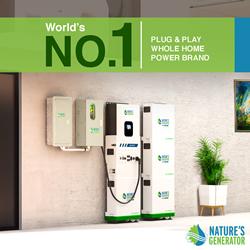What’s the difference between low voltage battery and high voltage battery in a home solar system?
Low voltage battery is small and affordable , which easy to install .
What's the difference between low voltage battery and high voltage battery in a home solar system?
Battery systems are a great addition uses both low voltage batteries and high voltage batteries to a home solar system . Battery systems can store solar energy for use when the sun isn't shining, and they can also be used to buy energy from the grid when the cost per kWh is low. A common question we get asked is which type of battery is best for a solar PV system. There are two main types of batteries: high voltage (HV) and low voltage (LV). Today, we will discuss the difference between HV and LV batteries and help you decide which option is right for you.
What voltage of the energy storage battery is required to select a low voltage battery or a high voltage battery?
Voltage, also called potential difference or voltage where is the difference on charge between two points in an electric field. To greater the energy difference between these two points, the greater the voltage. Voltage is measured by volts (V), named after a physicist Alessandro Volta came from Italian, who also inventing the battery.
To select correctly a low voltage battery or a high voltage battery is more important. Higher voltage means more electrons flow through the electronic equipment. However, electronic equipments are designed to work with different voltages. Too much voltage will damage the circuit of equipment, while too little voltage will reduce performance.
The analogy between voltage and current and your energy storage battery system is...
A common analogy to explain voltage, current and resistance is a water tank connected to a hose. In this analogy, the water tank represents charge and the water pressure represents voltage and the water flow represents current.
The more water in the tank, the higher the charges and voltages. When the tank is full and the hose is turned on. As the water level in the tank decreases, the pressure at the end of the hose decreases, and the flow of water decreases.
A energy storage battery system can be thought of as a water tank that stores remain solar energy. When the tank is full, the pressure at the end of the hose is high, which is analogous to the voltage of the energy storage battery. As the battery is discharged, the voltage decreases, and the pressure at the end of the hose decreases as well. This also results in a decrease of charge for the battery, as there is now less water in the tank. The amount of water in the tank is analogous to the charge of the battery. As the amount of water decreases, there is less pressure and flow of water through the hose, which is analogous to the current in the battery.
Featured Product

Nature's Generator MyGrid 10K
A 10,000W plug & play whole-home generator with a 10kWh LiFePO4 battery for reliable backup power. Features easy setup, flexible 120V/208-240V input, and solar/wind charging. Expandable with extra batteries or solar panels, and can pair two units for 20,000W for even larger energy needs. Powers your home during power outages, reduces electricity costs, and supports sustainable energy.
